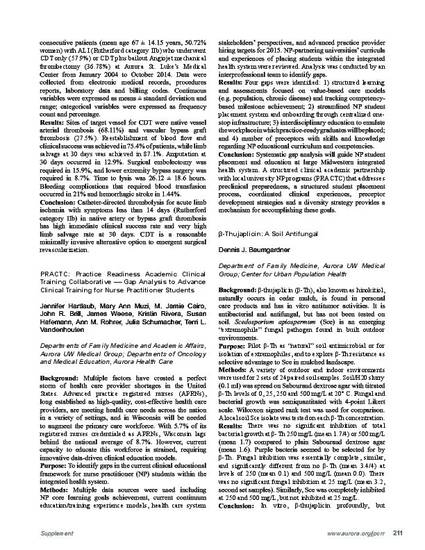
- advanced practice nurse,
- nurse practitioner,
- education,
- provider shortage
Background: Multiple factors have created a perfect storm of health care provider shortages in the United States. Advanced practice registered nurses (APRNs), long established as high-quality, cost-effective health care providers, are meeting health care needs across the nation in a variety of settings, and in Wisconsin will be needed to augment the primary care workforce. With 5.7% of its registered nurses credentialed as APRNs, Wisconsin lags behind the national average of 8.7%. However, current capacity to educate this workforce is strained, requiring innovative data-driven clinical education models.
Purpose: To identify gaps in the current clinical educational framework for nurse practitioner (NP) students within the integrated health system.
Methods: Multiple data sources were used including NP core learning goals achievement, current continuum education/training experience models, health care system stakeholders’ perspectives, and advanced practice provider hiring targets for 2015. NP-partnering universities’ curricula and experiences of placing students within the integrated health system were reviewed. Analysis was conducted by an interprofessional team to identify gaps.
Results: Four gaps were identified: 1) structured learning and assessments focused on value-based care models (e.g. population, chronic disease) and tracking competency-based milestone achievement; 2) streamlined NP student placement system and onboarding through centralized one-stop infrastructure; 3) interdisciplinary education to emulate the workplace in which practice-ready graduates will be placed; and 4) number of preceptors with skills and knowledge regarding NP educational curriculum and competencies.
Conclusion: Systematic gap analysis will guide NP student placement and education at large Midwestern integrated health system. A structured clinical academic partnership with local university NP programs (PRACTC) that addresses preclinical preparedness, a structured student placement process, coordinated clinical experiences, preceptor development strategies and a diversity strategy provides a mechanism for accomplishing these goals.
Available at: http://works.bepress.com/jennifer-hartlaub/1/
